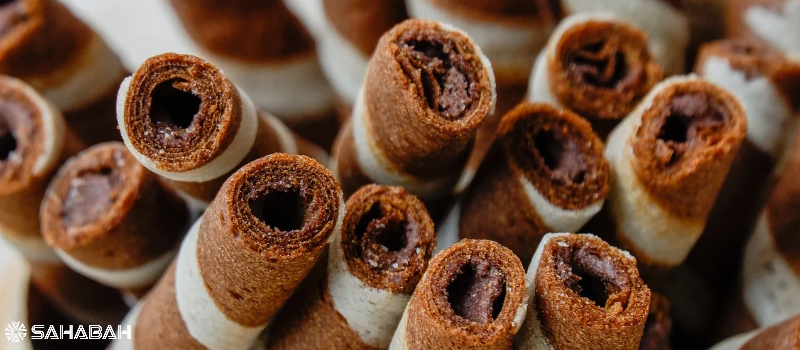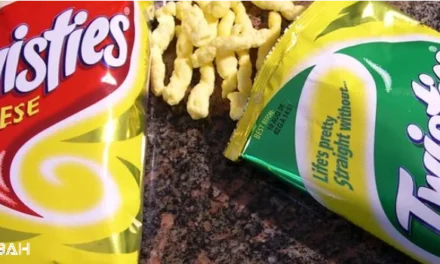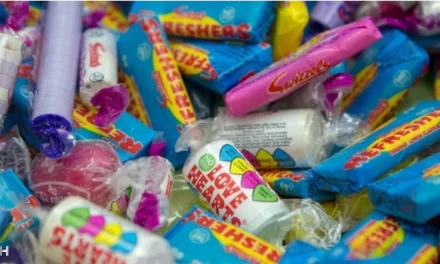Latiao is a classic Chinese street food snack that has recently gone viral on social media. The fried gluten sticks have a crispy texture and savory flavor. With its surge in popularity, many are wondering – is latiao halal?
What is Latiao?
Latiao, also known as Chinese cruller or Chinese oil stick, is a popular Chinese snack made from wheat flour. The dough is made from a mix of wheat flour, water, salt, and seasoning. It is then shaped into long strips or sticks and deep fried at high temperatures until golden brown and crispy.
The origins of latiao can be traced back centuries to the Song Dynasty in China. It became popular as an affordable, tasty street food. Latiao has a crispy, crunchy texture on the outside from frying. The inside is chewy and soft.
There are both sweet and savory variations of latiao:
- Plain latiao – just flavored with salt, pepper, soy sauce
- Sweet latiao – coated with sugar or honey
- Savory latiao – sprinkled with soybean or sesame seeds, green onions etc.
- Spicy latiao – coated with chili oil and chili powder
The most common type is plain latiao, which has a mild flour and salt flavor. Latiao is commonly eaten for breakfast in China.
Is Latiao Made of Any Non-Halal Ingredients?
The main ingredients in latiao are wheat flour, water, salt, and vegetable oil. These core ingredients are halal. There is no pork or alcohol used in traditional latiao.
The oil used for deep frying is usually peanut, soybean, or vegetable oil – all halal oils. Some vendors may use small amounts of animal fat along with vegetable oil, so this needs to be verified.
For spicy latiao variations, chili powder and chili oil are used to add heat. These flavorings are also halal.
Some types of latiao may contain non-halal ingredients like:
- Shrimp latiao – contains minced shrimp
- Egg latiao – made with eggs
- Pork floss latiao – sprinkled with pork floss
As long as these non-halal variations are avoided, plain latiao is generally considered halal. But it’s always best to check with the vendor.
Why Do Some Consider Latiao Doubtful or Non-Halal?
While the core ingredients of plain latiao are halal, there are some factors that create doubt about its halal status:
-
Unknown cooking oil sources – The oil used for frying by street vendors may come from non-halal sources. It may have been used to cook pork or other non-halal foods previously.
-
Cross-contamination – Since latiao is made in bulk by street vendors, there could be accidental cross-contamination from non-halal ingredients used in other foods.
-
Unverified ingredients – When purchasing latiao from non-Muslim Chinese vendors, it’s hard to verify if all the ingredients used are definitely halal.
-
Regional unavailability – Latiao is not commonly sold in Muslim majority regions. So traditional halal verification methods are not applied to this Chinese snack.
For these reasons, some conservative Muslims consider latiao to be doubtful or non-halal unless its halal status can be verified.
How to Ensure the Latiao You’re Eating is Halal
If you want to enjoy latiao and make sure it’s halal, here are some tips:
-
Purchase latiao only from credibly halal-certified food vendors or Muslim-owned businesses whenever possible. This guarantees the halal status.
-
If buying from non-certified Chinese vendors, inquire about the oil they use. Ensure it has only been used for frying verified halal foods.
-
Stick to plain latiao. Avoid any latiao with non-halal additions like shrimp or pork floss.
-
Ask vendors about their ingredients and preparation methods to screen for any haram substances.
-
If in doubt about the halal status of a particular latiao, it’s better to avoid consuming it.
Exercising caution helps ensure the latiao you enjoy is halal and permissible for Muslims.
Nutrition Facts and Health Benefits of Latiao
Latiao can be enjoyed as an occasional treat in moderation. Here are some key nutrition facts:
-
High in carbs – Since it’s made of wheat flour, latiao is high in carbohydrates. A 100g serving contains about 50g of net carbs.
-
High in calories – Latiao packs about 350 calories per 100g serving since deep frying adds fat and calories.
-
Low in protein – Unlike ingredients like eggs or meat, latiao is low in protein with only 6g per 100g.
-
Provides energy – Thanks to all those carbs, latiao gives you a burst of energy. That’s why it makes for a good breakfast.
-
Low in nutrients – Besides carbohydrates, latiao doesn’t provide much nutritional value. It’s mostly empty calories.
Enjoy latiao in moderation as the occasional treat. And balance it out with more nourishing foods rich in protein, vitamins, and minerals.
Conclusion
Latiao’s classic crispy, chewy texture and savory wheat flavor have made this Chinese snack go viral. While its main ingredients are halal, the oil and preparation methods used by street vendors create some doubts about latiao’s halal status. Exercising caution when purchasing latiao and verifying its halal certification or ingredients can help ensure it is permissible for Muslim diners. In moderation, this iconic fried street food can be enjoyed as halal treat.
Frequently Asked Questions: Is Latiao Halal?
Yes, Latiao is Halal-certified by LPPOM MUI, making it suitable for consumption by Muslim customers.
What is Latiao?
Latiao is a popular Chinese snack that has gone viral on platforms like TikTok. It is a spicy gluten stick made by the Weilong company in China.
Is Latiao a vegan product?
Yes, Latiao is a vegan snack as it does not contain any meat or animal-derived ingredients.
How spicy are Latiao sticks?
Latiao sticks are known for being very spicy, with a flavor profile that includes cumin and chili for a fiery kick.
How is the production and packaging of Latiao handled?
The production and packaging of Latiao are done in a factory in Indonesia to ensure quality and safety standards are met.
What are some typical Chinese snacks that Latiao is compared to?
Latiao is often compared to typical Chinese snacks like mukbangs and other spicy food items.
Are there any food safety concerns related to Latiao?
Latiao undergoes strict quality control measures to ensure food safety, with ingredients like sorbic acid and dehydroacetic acid used as preservatives.





